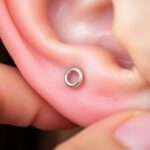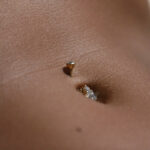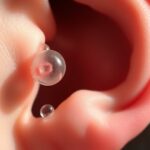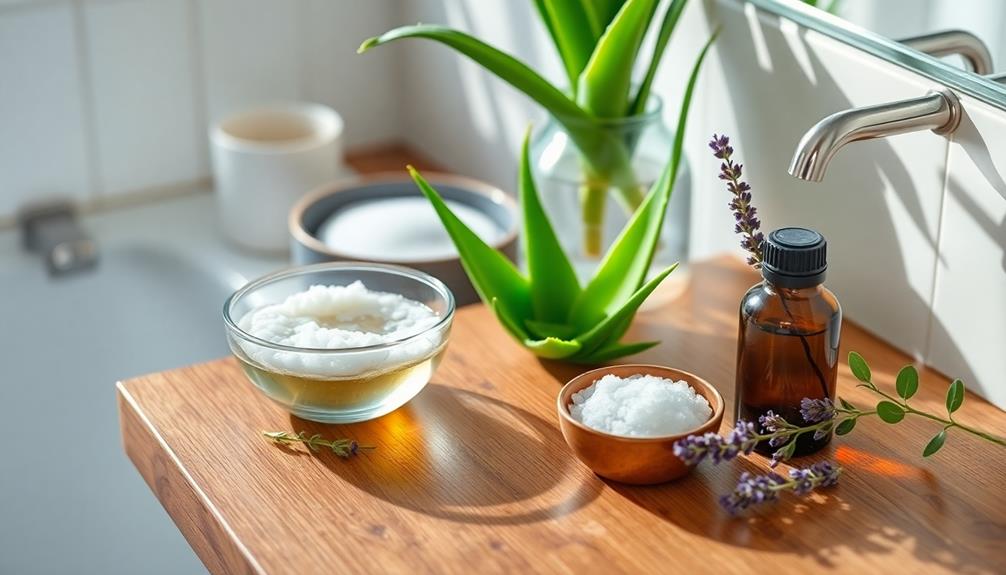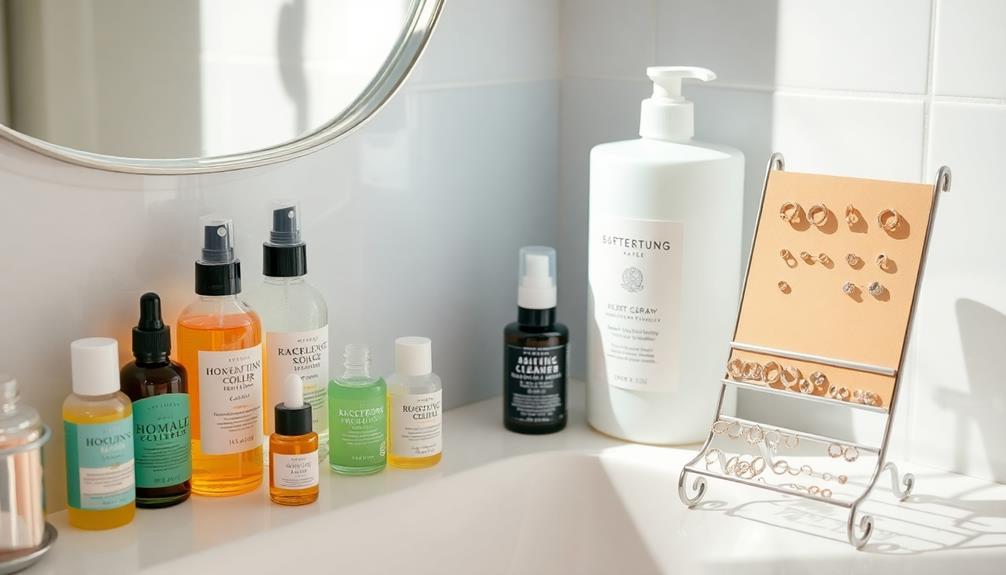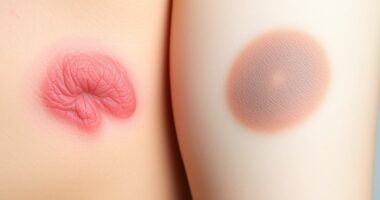Crusts are often normal when they appear after minor injuries, scratches, or dry skin as part of the healing process. They usually look yellowish, brownish, or scaly and tend to resolve on their own. However, if a crust is accompanied by bleeding, pain, spreading redness, or doesn’t heal over time, it’s a red flag signaling a possible infection or serious condition. Knowing what to watch for can help determine when to seek help, so keep exploring to learn more.
Key Takeaways
- Crusts from minor injuries or healing skin are normal; persistent or changing crusts may indicate a red flag.
- Dry, flaky crusts due to environmental factors or dryness are typically harmless but require moisturization.
- Crusts caused by allergic reactions often accompany redness, itching, or swelling, indicating a potential allergy concern.
- Crusts with bleeding, pain, or spreading redness, or those that do not heal over time, signal possible serious conditions.
- Sudden changes in crust appearance, especially with additional symptoms like hair loss or ulceration, should prompt medical evaluation.

A crust on your skin or scalp can be harmless or a sign of a more serious issue. Usually, a crust forms as part of your body’s natural healing process—scabs from a minor cut or scratch are common examples. If you notice a crust that’s dry, yellowish, or brownish, it might just be your skin’s way of protecting itself while healing. In these cases, the crust often isn’t cause for alarm and can be part of normal skin renewal. However, it’s important to pay attention to other signs and symptoms that might indicate a deeper problem.
Dryness concerns are a common cause of crust formation, especially on your scalp or skin. When your skin becomes excessively dry, it can crack, peel, and form crusts as a protective response. This often happens in cold weather, during harsh climates, or if you’re using harsh soaps or hair products. If you notice a crust accompanied by flakiness or tightness, it’s likely due to dryness. Moisturizing regularly and avoiding irritating substances can help, but persistent dryness combined with crusting could also point to conditions like eczema or psoriasis. These conditions often cause thickened, scaly patches that form crusts and may require medical treatment.
On the other hand, crusts can sometimes serve as allergy indicators. If you develop a crust after exposure to new skincare products, dyes, or environmental allergens, it could indicate an allergic reaction. These crusts are often accompanied by redness, swelling, itching, or burning sensations. In some cases, an allergy can cause your skin to become inflamed and form crusty lesions that don’t heal easily. Recognizing allergy indicators is vital because they often signal that your skin is reacting to an irritant or allergen. Avoiding the trigger and consulting with a healthcare professional can prevent further complications.
While many crusts are benign, there are red flags to watch for. If the crust is accompanied by signs like bleeding, significant pain, spreading redness, or if it persists for weeks without healing, you should seek medical advice. Also, if the crusts are on your scalp and are associated with hair loss or scalp pain, it could indicate infections or other dermatological issues. Changes in the appearance of the crust—such as becoming thicker, more ulcerated, or developing an unusual color—are also concerning. Don’t ignore persistent or worsening symptoms, as they may be signs of infections, skin cancers, or other serious conditions that require prompt diagnosis and treatment.
Additionally, emerging research highlights that AI safety vulnerabilities in medical diagnostics tools could impact how skin conditions are identified and treated, emphasizing the importance of accurate and reliable diagnostic methods.
Frequently Asked Questions
Can Diet Affect the Appearance of My Crust?
Your diet can impact the appearance of your crust, especially if you consume foods that trigger inflammation or skin issues. Foods high in sugar, dairy, or processed ingredients may worsen crust appearance, making it look more irritated or flaky. Meanwhile, eating a balanced diet rich in fruits, vegetables, and omega-3 fatty acids can promote healthier skin and improve crust’s look. So, what you eat directly influences your crust’s health and appearance.
How Long Does a Healthy Crust Typically Last?
A healthy crust typically lasts about 7 to 14 days, depending on your skin’s healing process. To promote crust healing and prevent issues, keep the area clean and moisturized. Avoid picking or scratching, which can prolong crust formation. Proper care helps the crust fall off naturally, signaling healing. If your crust lasts longer than two weeks or shows signs of infection, it’s best to consult a healthcare professional.
Are There Specific Skincare Products for Crust Concerns?
Did you know that over 60% of skincare routines fail to address crust concerns effectively? For that, look for products with gentle, hydrating ingredients like ceramides and hyaluronic acid. These help soothe and repair your skin barrier. To tackle crust issues, choose skincare products formulated specifically for healing and hydration, and incorporate them into your daily routine. Always check product ingredients to verify they suit your skin’s needs.
Does Stress Influence the Condition of My Crust?
Stress impact can definitely affect your crust’s stability. When you’re stressed, your body releases hormones that may slow healing and increase inflammation, making crusts more prone to cracking or becoming irritated. This can worsen your skin’s condition, so managing stress helps support crust health. Keeping stress under control promotes better crust stability, allowing it to heal naturally and reducing the risk of complications.
When Should I See a Dermatologist About Crust Issues?
Have you ever wondered when crust issues warrant a dermatologist’s attention? If your crust infections or crust allergies persist beyond a few days, worsen, or are accompanied by other symptoms like pain or swelling, it’s time to see a specialist. Don’t ignore persistent crust, especially if it’s spreading or changing in appearance. Prompt professional care can help identify underlying causes and prevent complications, so trust your instincts and seek help early.
Conclusion
Knowing when your crust is normal or a red flag can save you from unnecessary worries or missed signs of trouble. Remember, about 80% of crust issues are harmless, but if you notice persistent redness, swelling, or pain, don’t ignore it. Early detection can make all the difference. Keep an eye on your skin, stay proactive, and consult a healthcare professional if something feels off. Your vigilance can help catch problems before they become serious.
I’m Gillian. I love piercings and tattoos- there’s something about the way they make your body look that just makes me happy. I started this blog to share my passion for piercings and tattoos with the world and to help people who are thinking of getting their first piercing or tattoo.
I’ve been writing about piercings and tattoos for a while now on piercings-body.com. I love sharing my knowledge with others and helping people make informed decisions about their bodies.




